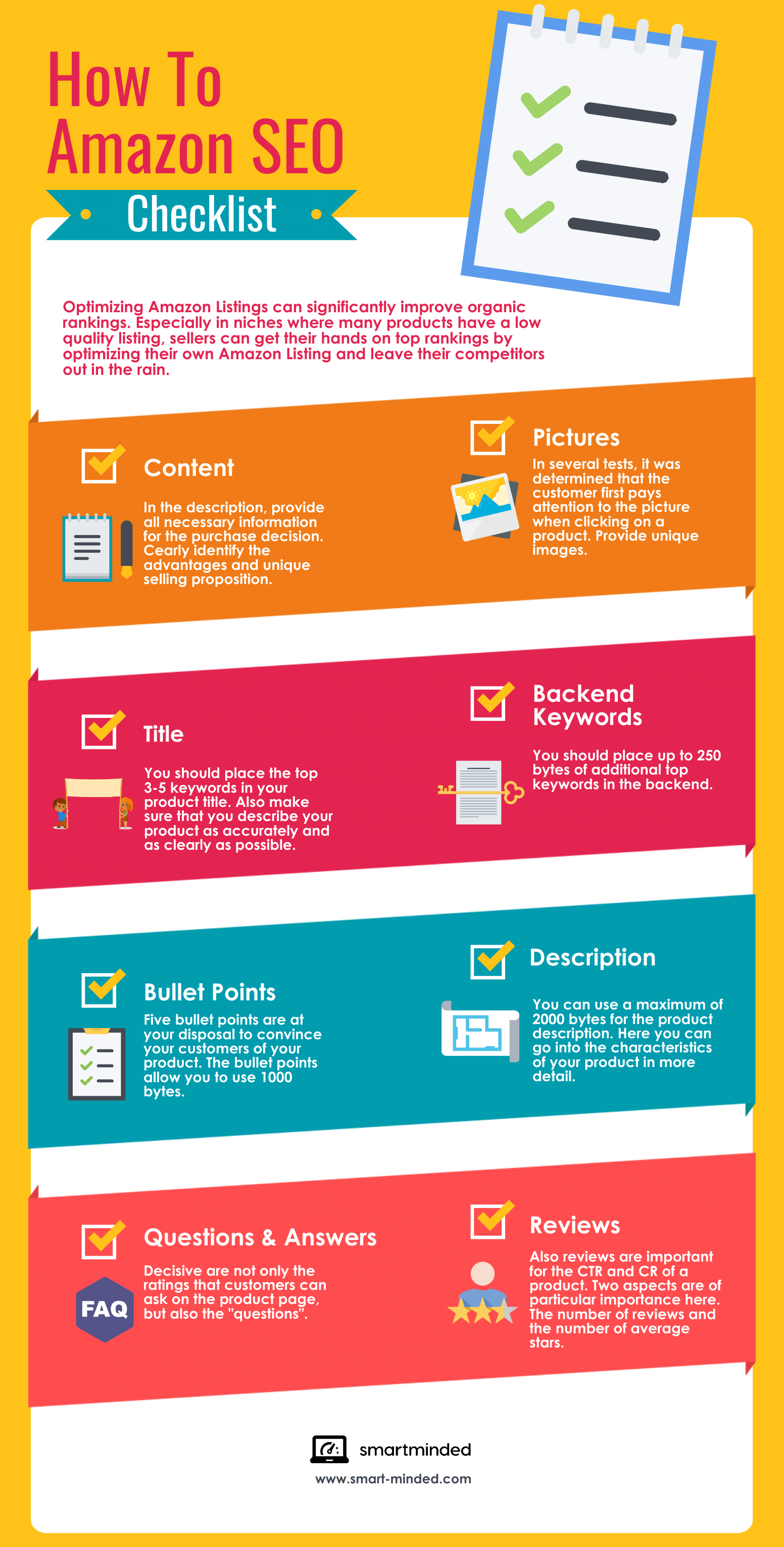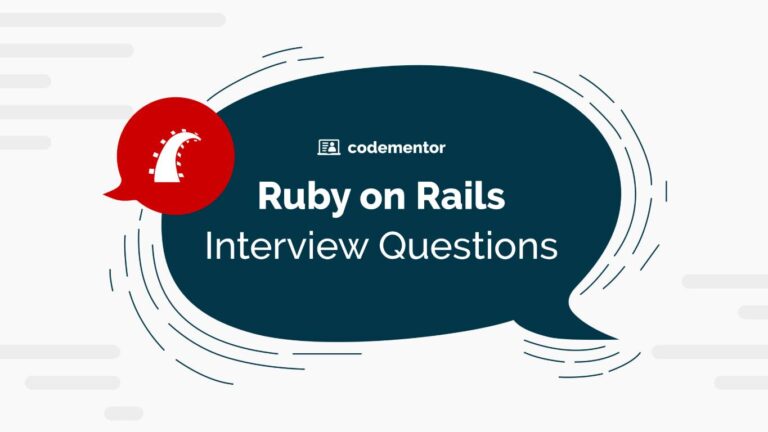Working for a software company with a multichannel ecommerce operations platform, I see many ecommerce businesses increase their profit margins by leveraging Fulfillment by Amazon — both new sellers and existing retailers. Fulfillment by Amazon (FBA) is a great way for many people to find their niche in online sales and marketing on the Amazon Marketplace and other channels.
Everyone knows that Amazon works with third-party sellers, but did you know that in 2020, nearly half of all Amazon sales came from third-party sellers and not Amazon directly? Not only that, but about 2/3 of those sellers are using the FBA platform. What some people don’t realize is that just about anyone can sell something on Amazon, provided they know where and how to do so.
Currently, more than two million people around the world are doing it, and now it’s up to you to decide if it’s the right path for your business. And FBA works not just in the United States, but in many countries worldwide. This guide will cover the major points you need to know.
What is Amazon FBA?
Fulfillment by Amazon is a service offered by — you guessed it — Amazon, as a means for third-party sellers to automate their order fulfillment and shipping services. It’s a pretty simple concept: Sellers sell, Amazon ships.
Anyone enrolled in Amazon FBA can let Amazon handle all shipping, including returns and refunds, as well as product warehousing in Amazon’s warehouses, picking and packing, and more.
Sellers send their products to Amazon, who warehouses everything and then processes all of the orders as they come in. As long as you handle the sales and make sure Amazon stays stocked with your products, the rest is done for you.
And yes, you have to pay Amazon fees for it. Of course you do. So, what do you get for the money?
- 24/7 Amazon customer service
- All fulfillment and shipping costs included (pick, pack and ship)
- Access to one of the world’s most dynamic fulfillment networks
Most people are familiar with the fact that Amazon is a giant in the online retail and fulfillment space. COVID-19 and the resulting pandemic has only served to increase the use of the Amazon platform, which has over 300 million active customer accounts around the world.
Bear in mind that FBA might not be ideal for low-value items, large dimension products or other circumstances. While it offers a lot, it’s not a guaranteed solution for every seller. How can you decide? That’s why we’re here.
Let’s take a quick look at the history and evolution of this platform, and then we’ll dig into the features, pros and cons, and more.
The Evolution of FBA
Amazon started its FBA program in 2006, but the company has been paving the way for online retail for years. The brand had been dominating the world of online sales and fulfillment, despite its modest beginnings in the 1990s, and saw an opportunity to help others do the same. Of course, it’s not entirely a valiant effort on the part of Amazon, since they’re making money from their FBA service, too.
Amazon decided that it would like to help small businesses benefit from its own fulfillment capabilities and leading customer service infrastructure. Essentially, the brand wanted to share its business model with others and help third-party sellers learn how to profit big by doing things the “Amazon Way”.
The FBA program, like Amazon itself, is constantly evolving and changing to meet the needs of the evolving consumer landscape and online retail environment. This is both a blessing and a curse for those enrolled. It will be easy to stay updated with the current trends and market demands, but it can also be difficult to keep up with the constant changes and updates to the process, the guidelines, and other aspects of the program.
Fortunately, in this guide, we’ll cover all the details about the Amazon FBA program, including the future potential it has, to help you decide on your next move.
The Newest Changes and Features of Amazon FBA
Fulfillment by Amazon is constantly changing and adapting to meet the needs of both its customers and the sellers that are using the platform. Keeping up-to-date with the latest changes and additions can help brands meet consumer demand and stay at the top of their own game with the FBA service.
For example, one big change in 2020 is the added comingling of inventory, which is permitted if Amazon barcodes are used. What is commingling? It’s when Amazon stores every unit of a single product together, regardless of the seller, and ships any one of these to a buyer. It’s also called stickerless inventory.
This has its own pros and cons, but it can possibly end up in counterfeits being shipped to your customer instead of the high-quality unit you placed in Amazon’s warehouses (since the products are picked from any available stock — including stock provided by someone other than you) or create other issues. So you’ll want to keep an eye on things if you take advantage of this feature. Some instances have occurred where legitimate sellers using FBA have been banned from selling on Amazon due to negative reviews caused by damaged or fake products.
Another new change as of August 2020 is the Inventory Performance Index, which measures a variety of elements to determine how your inventory is performing and help you improve that by getting rid of excess inventory, improving your sell-through rate, and more. You’ll want a score above 500, which is calculated based on factors like:
- In-stock inventory
- Excess inventory
- Stranded inventory
- Sell-through rates
Amazon has ASIN level quantity limits to help ensure that sellers have a variety of products and the new inventory performance dashboard makes it easy to monitor everything. You can track your inventory activity, keep an eye on your IPI score, and even get advice and tips on how to make better use of your inventory from Amazon itself.
Amazon is always changing and updating the FBA program. Fortunately, they’ve got a fairly communicative system that notifies sellers of new changes and features as they are offered. The biggest issue here is staying up to date and making necessary changes as they come down the channels.
The Costs of FBA
Here’s the part everyone always wants to jump to — the cost. It’s going to cost money, but it doesn’t have to be a small fortune. For starters, think about things like how Amazon charges fees — in storage, items are charged based on size and weight, not cost. For you, that means selling low-dollar items through FBA could cost more than it’s worth. Be deliberate in choosing what you do and don’t list through the FBA platform.
You pay storage fees and fulfillment fees with the Amazon FBA program. The more inventory you have stored, the more it’s going to cost you. Amazon also has this nifty thing where your costs go up for items that are stored for longer than 180 days, encouraging people to get and keep products moving.
In addition, Amazon tracks items that are in storage at an Amazon warehouse but are not listed for sale, or stranded inventory. Stranded inventory costs you money, but Amazon helps by providing a stranded inventory report.
You can find settlement fee reports in your reporting section of the FBA dashboard, which will allow you to see what kind of fees you’re actually paying to Amazon as a part of this program. Remember, too, that because of peak holiday demand, you’ll pay higher storage fees to warehouse your inventory during the holiday season than the rest of the year. This is the time to double-check your FBA listings and remove anything that won’t sell, so it’s not just sitting and costing you money.
Yes, there are a few different costs involved with FBA, and there are some other factors related to pricing to consider. However, Amazon generally does well to provide useful information and assistance to ensure transparency as much as possible.
The Pros and Cons of FBA
In deciding whether Amazon FBA is the right solution for you, you’re going to want a pros and cons list. It’s how all the best decisions are made, after all, and it’s a great way for you to see what’s going to work best for your situation. After doing a thorough review of the platform and its offerings, here are our best pros and cons to offer for your consideration.
1. Pros of FBA.
While this isn’t a comprehensive list (that would take a lot more time and space), here are some of the biggest things that stand out about Amazon FBA to us.
- Effortless Shipping and Logistics: Amazon does all the work for you. You just keep track of your listings, make sure they’re stocked on product, and let the fulfillment be taken care of from start to finish. For a small fee, you get a big weight off your shoulders.
- Discounted Shipping Rates: Because you’re working with Amazon, a global fulfillment giant, you’re also going to spend less on your shipping costs through the FBA platform. Therefore, even though you’re paying fees, they may be lower than you think when you factor in the shipping savings, and still cheaper than managing your own shipping and fulfillment in-house.
- Return Management: In addition to sales, FBA also handles returns and refunds because they are considered part of the fulfillment process. This takes one more thing off your plate.
- Customer Service Management: Amazon offers their own customer service for FBA sellers. You can also use their FBA platform to take care of your own customer service needs, routing all of your service through one platform for easy management.
- Quick Delivery: Products in FBA automatically get the Prime badge and are eligible from Prime free shipping (to the customer) and shipping times. Plus, you aren’t going to have to pay or charge premium shipping rates to do that, because it’s included with the service.
- More Storage Space: Without FBA, how much inventory could you realistically store? Do you have a warehouse or means to rent one? Are you capable of moving and managing inventory on that scale? This is where the Fulfillment by Amazon program really wins. You essentially have access to unlimited storage space – for a cost – because Amazon has warehouses all over the country that can hold a lot of goods.
- Omnichannel Fulfillment: Not only does FBA allow you to sell to targeted customers through the Amazon platform, but you will also have access to new multi-channel fulfillment solutions. The MCF service (or Amazon Multi-Channel Fulfillment) allows you to sell your products on various platforms and channels (such as BigCommerce and eBay) while still having Amazon fulfill them.
2. Cons of FBA.
Because no two people are the same, it’s important to look at the potential reasons that FBA might not be the right solution for your needs. Here are some of the factors to consider.
- Cost: For those who are trying to get started, money is everything. FBA is indeed a really handy service, but it costs money. That’s money that some people might not have to spend just yet. Plus, this service isn’t good for low-cost items because of the way fees are calculated, so you’ll want to be selective about products you enroll. Fortunately, Amazon has a handy FBA calculator that can help you see whether it’s a profitable move.
- More Returns: In many cases, there have been sellers who see an increase in the number of returns or their frequency. This is due, in part, to Amazon’s open return policy. While this could affect the bottom line, Amazon handles the processing, so it’s not the end of the world. While Amazon used to have returns shipped back to them and you would have to arrange to have them then forwarded to you, Amazon is making changes that will allow returns to go directly back to your facility.
- Long-Term Storage Fees: Amazon doesn’t like sitting on inventory. Therefore, you’re going to pay more for stuff that sits longer. Long-term storage fees aren’t the end of the world, but you’ll have to factor them into your ongoing budget to ensure that FBA still makes financial sense for your business goals. They also don’t like to store products that aren’t actively for sale and will charge for this and also negatively adjust your metrics. However, all of this can be viewed in your seller console and you can arrange for products to be shipped back to your own facility.
- Product Prep Requirements: Amazon has its own list of requirements for products that are coming into the warehouse to be fulfilled through FBA. You will have to ensure that all of your products are prepared accordingly before sending them off to Amazon, including how they are packaged, ensuring proper labeling, and shipped following the FBA inventory warehousing guidelines. Some of the details can be tricky.
- Sales Tax: Sales tax is managed at the state level. If your business operates in one state and has its items warehoused in a different state, you might not be sure which tax rate to use. Fortunately, there are tools to help automate various tax situations and rules, to help you figure out what to charge and Amazon can manage most of this for you.
- Amazon FBA Fee Payment: There’s no putting off what you owe Amazon. You can’t use the next sale to pay for the prior one. Amazon will deduct all fees owed to them before making any payment to you. And if you don’t have enough of a balance to cover fees? You’ll need to provide a credit card to pay off the remaining balance.
Amazon FBA vs. Seller-Fulfilled Prime
For those who want to capitalize on the valuable Prime customer base but don’t want to pay the fees of the FBA program, there is the option to create a Seller-Fulfilled Prime (SFP) account where you can sell and fulfill your own products and orders. Basically, you get to use the Amazon Prime name and shipping guidelines, but you do all of the picking, packing and shipping.
You also have to handle all of the returns, and pay all of the shipping costs. While FBA charges fees for storage and fulfillment that may be fractional in comparison, Seller-Fulfilled Prime makes you pay all shipping costs and that can eat your profits. However, these costs are generally fixed and won’t fluctuate a lot. FBA members are at the mercy of Amazon, who has it worked into the program that their fulfillment fees can change at any time.
It’s only fair to point out that Amazon is doing all the work for FBA sellers. Of course they’re going to want something in return, and over time that’s going to come in the form of fee increases. However, that means you’ve got to stay on top of those FBA fees if you aren’t going to get swallowed by them.
Inventory storage and control is also all in your hands — with FBA, you send your stuff to Amazon and they handle the rest. When you use SFP, you have to manage your inventory, find a place to store it, pay for storage and more. The logistics of fulfillment are all at your behest, and that’s a lot to handle for anyone.
With both programs, you’ll be required to work within the guidelines of Amazon’s standard rules in the marketplace, including with things like returns, exchanges and other guidelines that have been set forth. Customers are expecting the Amazon treatment, no matter who is actually selling the item, and Amazon makes sure that they get it.
Ultimately, SFP is a lot more work, so small brands and sellers tend to fare better with the FBA program.
However, if you have low cost items, large items that would incur high storage fees with Amazon, or a mature fulfillment process, SFP is a great way to get the “Prime” badge while keeping your costs down.
FBA vs Non-FBA: A Quick Cost Example
Although the exact costs involved in this process will depend on what you sell and what kind of fees you incur through the FBA platform, it can sometimes be helpful to see examples. Here, we’ll take a look at a few different types of product listings and their potential FBA vs. non-FBA costs and profits to help you see how you will need to do a step-by-step evaluation of your own products when deciding if this is the right path for your brand.
Amazon has a chart for its FBA fulfillment fees in addition to the FBA calculator, which can help you determine whether an item is profitable enough to sell on FBA or if you should use another method.
1. Example 1: Paperback Book.
Say you have a book that is less than 10 oz., which would qualify as a “small standard” product. Therefore, its fulfillment fee would be $2.50 according to current rates. You’ll also have to factor in your storage fees and any other costs, which totals $3.50 in our example.
| DIY Fulfillment | FBA |
|
$14.99 retail price with free shipping -$4.05 Amazon seller fee -$3.00 in your fulfillment costs -$0.50 for storage costs -$3.00 for item unit cost |
$14.99 retail price with free shipping -$4.05 Amazon seller fee -$4.90 in Amazon fulfillment fees -$0.60 for storage costs -$3.00 for item unit cost |
|
= $4.44 net profit without FBA |
= $2.44 net profit with FBA |
2. Example #2: 32” TV.
In this example, we’ll look at a larger item, which is where FBA can really come through. High-dollar and large-size items are more profitable on FBA because there’s a huge opportunity to save on fulfillment costs.
| DIY Fulfillment | FBA |
|
$259.00 retail price with free shipping -$40.65 Amazon seller fee -$20.00 in seller fulfillment fees -$10.00 for storage costs -$199.00 for item unit cost |
$14.99 retail price with free shipping -$4.05 Amazon seller fee -$4.90 in Amazon fulfillment fees -$0.60 for storage costs -$3.00 for item unit cost |
|
= -$10.65 net loss without FBA |
= $14.25 net profit with FBA |
Tips, Tricks and Tactics for Maximizing FBA Sales
This platform isn’t new. For you, that means there is plenty of valuable insight to be gleaned to help you maximize your FBA sales from the start. There’s no need to be a brand name or have a brand new product. If you’re looking to increase your profits and streamline your growth using this service, here are a few tips and tactics to keep in mind.
1. Use online analytics tools.
Use online analytics tools to do product research on the most profitable products and popular items that are available on Amazon — and to determine which are the best product categories to sell in. The bestsellers are at the top for a reason — take notes.
2. Be smart about your product selection.
Think about sales rank, but also about what you get in exchange. High-ranking products are competitive, but they’ll sell quickly and keep inventory moving. Low-ranking products could cause stagnant inventory and long-term fees. However, they may also give you the chance to become a leading seller since there’s less competition. You have to weigh the options for yourself.
3. Bundle items when you can.
One of the hardest parts of Amazon is competing with dozens of near-identical listings that may be a handful of reviews or a few dollars in price different, but otherwise indiscernible. Stand out by creating bundled listings that draw people’s attention and offer more for their money.
4. Build your brand.
You can’t just sell a bunch of items and hope for the best. You have to take the time to create a brand and put it in a position that creates success and reaches your target audience. It’s not just about being in the buy box. It’s about making sure that you are selling high quality products and that you are sourcing them from a reputable manufacturer or distributor. You need to make sure you get good reviews for the product to ensure your metrics qualify you for the buy box and maximizing your sales opportunities.
5. Answer questions from users.
By and large, one of the biggest factors in choosing a seller on Amazon is how well they respond and engage when provoked. If a user has a question, answer it promptly and politely to let everyone know that you’re there when they need you.
Using FBA the Right Way
As with all things, Fulfillment by Amazon only works if you integrate it correctly and use it properly. We already covered some great tips for improving your chances of success with FBA, but there are some bigger best practices and overall themes that you need to follow in your own use of this platform.
1. Start small.
You don’t have to sell everything, and you shouldn’t. Remember, Amazon FBA costs money for storage and warehousing, so until you know what’s going to sell, consider trying a few items and working your way into different products as time goes on. Choose a well-cultivated selection of items and list them through FBA so that you have a slightly easier time learning the best practices when you’re just starting out.
2. Choose products wisely.
As we mentioned above, you have to be very careful in product selection. Just because you think something would sell doesn’t mean that it will. The market is competitive on Amazon and you need to choose the most profitable products, avoid stagnant inventory, and that might allow you to stand out even if they’re not the top-selling items.
SEO FBA Best Practices


Amazon SEO practices are largely unknown, but they are not difficult to extrapolate. The infographic above should assist you in gaining a better understanding of how SEO works on Amazon.
This is one great way that brands and sellers can stand out in the Amazon FBA platform and get more attention than others. Search engine optimization is all about optimizing your content based on the way that people search for things online. It’s about giving people a website or listing that they can interact with and that delivers the information and answers that they need.
If you aren’t using SEO in your Amazon FBA listings, you’re missing out on an easy way to get those sales away from your competition.
Secrets of FBA Everyone Needs to Know
The FBA process is fairly simple, but there are a few more secrets that can help you find success through this marketplace. First, make sure that your product photos and titles are on-point.
So many of the listings on Amazon have gibberish titles that can look unprofessional, and optimizing titles takes all of a few seconds. Make sure that you take good product photos, too, and include as many views as possible. If your pictures are better, people will choose your listing over another similar one.
Also, never underestimate the power of user reviews. On Amazon, people need some way to find a reason to choose a listing. Therefore, in going through all the channels, they will eventually end up finding themselves at the reviews, looking to see what others have experienced firsthand.
Marketing is Everything. In a highly-competitive market like Amazon, you’re competing with a lot of the same or similar types of people and products. Your marketing is what’s going to make you stand out and help people choose your brand over the others. Marketing is critical to the success of all sellers who are using FBA, which is why you need to make sure that you have a solid marketing strategy in place. That’s probably the single biggest secret to success with selling on Amazon — effective marketing.
And communicating with others who have “been there done that” is also huge. There are several groups that focus on Selling on Amazon and have plenty of FBA sellers who are willing to answer questions:
And one other group we recommend joining — because you never know when Amazon will suspend your account) is the Amazon Seller Performance group.
How Can I Get Started?
If you’re ready to try out the FBA platform, you can head on over to the Amazon FBA website and start reading about the sign-up process. Amazon does a pretty good job of explaining their offering, including videos and other content, along with an entire learning section to help sellers get to know the service and how to create their own online sales success.
Be sure to take advantage of Amazon’s resources and tools, including Amazon Marketing Services, which we discussed briefly above. You can also start leveraging the benefits and minimizing the potential disadvantages by using the tips and insight provided here. The FBA program integrates with several online ecommerce platforms, making it easy for all sellers to get involved.
Amazon FBA Resources
Amazon and BigCommerce both have a lot of tools and resources to help you decide where to go from here. Whether you’re sold on FBA and just want to learn how to get started, or you want to see what other options there are, the information is out there. Here are a few important links to file away:
Summary
Leveraging the power of Amazon FBA allows you to get so much more out of your online sales, but only if you do it correctly and if you have products that are profitable for it.
There are several different ways to sell on Amazon and no two people will arrive at the same decision for the same reason. With the information presented here, it should be easier for you to decide on the correct path for selling on Amazon, whether that’s through FBA, SFP or any other means.
Ultimately, the Fulfillment by Amazon program offers sellers the best of everything in a neat little package that’s priced fairly well, all things considered. However, it may not work for all brands or products because of the fee structure and the way fulfillment is handled.
Before you decide on your next move, take a tour of the FBA platform and try out the calculator to see if you could improve profits by going this route.






